66 F. high temperature Thursday in the Twin Cities.
74 F. average high for May 31.
77 F. high temperature at KMSP on May 31, 2011.
9.34" of rain fell on the Twin Cities in May. Average is 3.25." 4.04" of rain fell during May, 2011.
7 days with .50" or more last month.
June: historically the wettest, most severe month of
the year. Tornadoes and hailstorms usually peak in June. Something to
look forward to.
400 ppm. CO2 levels have reached 400 parts per million over the Arctic region. Details below.
34.8 billion tons of CO2 pollutants released into the Earth's atmosphere in 2011, a new world record.
"
It's been at least 800,000 years – probably more – since Earth
saw carbon dioxide levels in the 400s, Butler and other climate
scientists said. Until now. Readings are coming in at 400 and higher
all over the Arctic. They've been recorded in Alaska, Greenland,
Norway, Iceland and even Mongolia." - from a Huffington Post article below.
Global Temperature Trends Since 1950. In spite of a
moderate La Nina cooling phase of the Pacific Ocean, 2011 will probably
wind up in the Top 10 Warmest Years on Record, worldwide, the warmest La
Nina on record. Source: WMO and
Real Climate. Details below.
The Drought Is Pretty Much Over. Here's the latest NOAA
Drought Monitor, showing an amazing turn-around in the rainfall department.
Wet Weather Gardening Tips.
Master Gardener Tricia Frostad has some good advice in light of the
recent (torrential) rains in May, well over 9" of rain in many gardens
across the metro: "
All this moisture can lead to fungal diseases on
plants. Fungus overwinters in infected plant residue and excessive
overhead watering (as in rain) can activate the fungus. The fungal
spores are spread by splashing water and wind to nearby plants and it
thrives in damp weather. Spots typically appear on leaves at the base of
the plant and move upward as the infection progresses. Remove any plant
material that is affected but be certain to never remove more than
1/3rd of a plant's leaves. Displose of these diseased leaves in the
trash or burn thhem. Do not return them to the compost pile. Try to make
sure that your plants have proper air circulation around the foliage,
which may mean pulling "volunteer" plants. Avoid wetting the leaves when
watering - it's much better to water at the base of the plant.
Fungicides can help in controlling the spread, but will not "cure" the
leaves that have already been affected."
Tour The Gardens Of Master Gardeners.
If you're looking for something to do this summer, and you love
gardening, consider touring the gardens of Master Gardeners - kind of
like the Parade of Homes, only better (and greener!) The event is in
July, but you can purchase tickets now and save a few bucks. Details:
"Visit eight gardens designed and tended by Carver-Scott Master
Gardeners on Saturday, July 28, 2012, 10 am to 4 pm. The gardens are in
Carver County (Minnestrista, Waconia, Excelsior, Chaska and Chanhassen).
Tickets are $12 in advance, $15 the day of the tour at each garden.
Advance tickets can be purchased by clicking the "Buy Now" button below
or at Tonkadale Greenhouse, Ambergate Gardens, Glenrose Floral
(Chanhassen), or by calling the Carver County Extension office
(952-466-5300), or the Scott County Extension office (952-492-5410).
The
gardens showcase wonderful water features, shade gardens, sun
combinations, interesting containers, unusual decor, a restored prairie
with grasses and wild flowers, a berm with interesting shrubs and an
amazing collection of trees.
Ticket Information. For more information, and a quick and easy (Paypal) way to purchase tickets, click
here.
Warmest Spring In Chicago In 142 Years. Here's an excerpt of a story from WGN's
chicagoweathercenter.com: "
The
weather as meteorological spring 2012 draws to a close couldn’t be
less representative of the season as a whole. Abnormal warmth has
characterized the past three months. Spring 2012 is to go down in the
record books as Chicago’s warmest in 142 years running a stunning
9-degrees above normal! The last spring with temperatures even close to
the one about the end occurred 35 years ago in 1977 when temperatures
finished within a degree of this one."
An Ugly Sky. Check out the
photo of the oncoming shelf cloud that struck Wichita, Kansas on Wednesday, courtesy of the NWS. Details: "
Severe storm approaching downtown Wichita. Picture taken by Alex Laugeman."
Tennis-Ball Size Hail. This could put a serious ding in your day; details from the Wichita office of The National Weather Service via
Facebook: "
Hail that fell over North Hutchinson. Picture taken by Deanna Fehrenbacher and courtesy KAKE-TV."
Largest Wildfire In New Mexico History. Here's an update from
NASA's Earth Observatory: "
According
to figures released by the U.S. Forest Service, the Whitewater-Baldy
fire had burned 170,272 acres (266 square miles), surpassing a fire
that burned 156,293 acres (244 square miles) near Los Alamos in 2011.
The Moderate Resolution Imaging Spectroradiometer (MODIS) sensor on
NASA’s Aqua satellite captured this view of the fire around 4:00 p.m.
local time (20:00 Universal Time) on May 29, 2012." Details from
InciWeb.org below:
- Date Started: 05/16/2012
- Number of Personnel: 1,246 personnel including
- Location: Approximately 15 miles E of Glenwood, NM
- 17 hotshot crews, 11 hand crews
- Cause: Lightning
- Equipment: 59 Engines, 27 Water Tenders, 7 Dozers
- Size: 170,272 acres
- Aircraft: 10 Helicopters
- Percent Contained: 5%
- Injuries to Date: Five
New Mexico Fire From Space. Here's a
striking image from NASA that shows the scale of the wildfire burning in a relatively desolate region of New Mexico.
Ground Fog From Space. Recent rains + clear skies +
light winds = ripe conditions for "lazy clouds", thick fog settling into
river valleys across the Ohio River Valley. Details from the
Louisville office of The National Weather Service: "
Localized
heavy rainfall during the morning hours on Tuesday, May 29th set the
stage for patchy heavy fog early Wednesday morning. This image below,
taken at 8 am EDT, shows widespread fog. Note the ribbons of dense fog
along the river valleys."
Children Of Andrew Still Recall 1992 Hurricane. Talk about a traumatic event, for both adults and kids alike. Here's an illuminating story from
USA Today: "
Some
of the most poignant images of the aftermath were those of children:
Standing in food lines, idling in sweltering heat beside damaged homes,
limp in the arms of rescue workers. Once back at school, some kids hid
under desks, apprehensive whenever thunderstorms approached. Others
spoke of nightmares that another hurricane would strike. "Disaster
really exposes all our childhood beliefs," said Jon Shaw, a psychiatrist
at the University of Miami
who studied children in the aftermath of the storm. "To discover that
people are unable to provide for you, protect you, is an increased
understanding of how the world works."
Photo credit above:
David J. Phillip / AP and MSNBC.com. "Andrew
Hagen, left, and Dante Diaz both lived through Hurricane Andrew -- and
both now are forecasters at at ImpactWeather in Houston."
Preparation Key For Hurricane Season. Here's some helpful, timely advice from
jacksonville.com: "
Edmond
also stressed the importance of having a family plan in place and each
member of the family understands it. This includes have a specific
meeting place in case you are separated – one near the home and one
outside the neighborhood if you can’t return home. And, have an
out-of-state contact – someone everyone in the family knows and knows
how to contact. Families should also have an evacuation plan and know
what to take and where to go. A plan should also be made for family
pets. If you plan to ride the storm out at home, make sure you have a
disaster survival kit. “The key to hurricane season is being prepared.
It doesn’t take long to check your supplies and replenish what you
need. And, there is nothing I can stress more than to check your
insurance policy. It’s better to make changes ahead of time, than find
out after a disaster that you didn’t have enough coverage,” concluded
Edmond."
Photo credit above: Kaylee LaRocque. "
NAS Jax Emergency
Management Officer Ray Edmond discusses hurricane preparedness measures
with NAS Jax Chapel staff during a briefing May 22. Hurricane season
begins June 1."
Stay On Top Of Hurricane Season With Apps, E-mail And Web. Here are some good resources from
The Miami Herald: "
This
hurricane season a flurry of tweets and a hailstorm of social media
information are in the forecast. The agencies that provide
storm-related information on this, the 20th anniversary season of
Hurricane Andrew, will tap technology in the way the masses seems most
active these days: online and pushing apps on their phone. “We have a
Twitter account, Facebook posts, YouTube, a blog and also a new Power
Tracker system for customers to monitor, in real time, power outages
and restoration efforts,” said Neil Nissan, spokesman for Florida Power
& Light. The Power Tracker allows users to type in their address on
a mobile device, tablet or computer and find directions quickly."
Graphic credit above: "
Hurricane Tracker - Florida app,
available on iTunes. The free app provides tailored information for
Florida during hurricane season. The company also has Tracker apps for
Lousiana, Texas and North Carolina. iTunes."
Read more here: http://www.miamiherald.com/2012/05/31/2825810/stay-on-top-of-hurricane-season.html#storylink=cpy
Homes Can Be Protected From Tornadoes. There is no
such thing as a truly "tornado-proof" home, unless you're building a
bunker that is mostly underground, or use concrete and steel
reinforcement. But there are steps you can take to reinforce an existing
home to make it more tornado-resistant; as reported in this article
from
UPI: "
The
International Code Council/National Storm Shelter Association Standard
for the Design and Construction of Storm Shelters is a tool to help
communities protect their residents from disasters and consolidates
previous references published by National Storm Shelter Association,
the Federal Emergency Management Agency and the Red Cross," Rick Weiland
chief executive officer of the International Code Council said in a
statement. "A properly built, high-wind, safe room can protect from the
most intense tornadoes, hurricanes and similar natural disasters. Safe
rooms can be designed to withstand winds up to 250 mph, offering safe
refuge for families in the path of high-wind events." A closet, bathroom, laundry area or storage room can be enhanced to serve as a safe room, Weiland said."
Photo credit above: Joplin damage aftermath photo courtesy of NOAA.
Missouri: Soldier's Looted After Tornado. This one made me do a double-take; here's an excerpt from
The New York Times: "
Four
Missouri National Guard soldiers stole electronics from a Walmart in
Joplin while helping with recovery efforts the day after the store was
destroyed by a tornado last year, according to records released Tuesday." Photo: NOAA.
CNN Hits 20-Year Primetime Ratings Low In May. On
the quiet news days CNN does poorly; on the big days viewers still tune
to CNN. The problem: not enough big days with "breaking story" that can
hold an audience. So do you flavor the news with opinion and political
spin, go the route of MSNBC and Fox? If you were programming CNN what
would you do? The story from
Huffington Post: "
The
bad news just keeps coming for CNN. May was the network's worst month
for total viewers during primetime in over 20 years. CNN drew an
average of just 389,000 primetime viewers from April 30 to May 27. In
comparison, MSNBC drew an average of 674,000 total viewers, while Fox
News boasted an average of 1,692,000 total viewers. It was also the
network's second-worst month in primetime for viewers in the key
demographic since October 1991."
Iconic, Efficient "Warburg House" Cost Less Than $100k To Build. Here's an excerpt of an interesting story from
gizmag.com: "
Canadian
design studio Bioi recently completed this compact home in Warburg,
Alberta after being given the challenge to create a contemporary and
energy-efficient home for under US$100,000. The result is a simple,
open and sustainable home, with a reduced space that holds all of the
functionality of a regular sized home. “Working alongside our client,
we determined the true necessity of the space that they required,”
project architect Jordan Allen told Gizmag. “Throughout the design
phase redundant spaces were eliminated, and non-inhabitable spaces were
pushed to an absolute minimum.”
Close Call. Rain brushed far southern Minnesota, a third of an inch at Redwood Falls, .28" at Rochester. Highs ranged from 52 at Grand Marais, 66 in the Twin Cities and 67 at St. Cloud.
Paul's Conservation Minnesota Outlook for the Twin Cities and all of Minnesota:
TODAY: Plenty of mild sun, beautiful. Winds: W 5-10. High: 72
FRIDAY NIGHT: Mostly clear and comfortable. Low: 53
SATURDAY: Lot's of sun, no complaints. Winds: W 5-10. High: 76
SUNDAY: Some sun, warmer - late-day T-storms possible. Winds: S 10. High: 82
MONDAY: Sunny and warm, feels like summer again. Low: 65. High: 87
TUESDAY: Hazy sun, humidity creeping up. Low: 65. High: 86
WEDNESDAY: Partly sunny, still dry (and quiet). Low: 66. High: 79
THURSDAY: Fading sun, clouds increase. Low: 65. High: 81
Getting Better
I'm happy for a break from heat, humidity and raging storms - not hiding in my weather bunker.
I'm still waiting for Garrison Keillor's creative crew to do a sketch about a mythical Lake Wobegon family, unable and unwilling to come out of their basement. Ever. One too many tornado warnings.
Weather phobia is a concern, especially for kids. Tornado trauma can inspire them to grow up to be
meteorologists. In fact most TV forecasters were inspired by a storm, a
flood or blizzard. No one with full command of their faculties sets out
to guess the weather on a daily basis.
Breaking news: ClimateClimate reports we're about to crush the record for warmest spring, nationwide, since 1895.
Yesterday came a report that CO2 levels in the Arctic just hit 400 ppm, a troubling milestone. Last year nearly 35 billion tons of CO2 was released into the atmosphere, a new record.
We warm up in the coming days, low 80s by Sunday, a lake-worthy day up at the cabin. This weekend should not be as squishy as last weekend. Saturday should be the drier day - scattered T-storms late Sunday, but probably not severe.
9.34 inches of rain soaked the cities in May, nearly 3 times the normal amount!
Climate Stories...
Climate Change: Carbon Dioxide Levels In World's Air Reach "Troubling Milestone". 400 ppm. A dubious milestone for CO2 levels worldwide. Here's an excerpt from a
Huffington Post article: "
WASHINGTON
-- The world's air has reached what scientists call a troubling new
milestone for carbon dioxide, the main global warming pollutant.
Monitoring stations across the Arctic this spring are measuring more
than 400 parts per million of the heat-trapping gas in the atmosphere.
The number isn't quite a surprise, because it's been rising at an
accelerating pace. Years ago, it passed the 350 ppm mark that many
scientists say is the highest safe level for carbon dioxide. It now
stands globally at 395. So far, only the Arctic has reached that 400
level, but the rest of the world will follow soon. "The fact that it's
400 is significant," said Jim Butler, global monitoring director at the
National Oceanic and Atmospheric Administration's Earth System
Research Lab in Boulder, Colo. "It's just a reminder to everybody that
we haven't fixed this and we're still in trouble."
Photo credit above: Alamy.
No Warming Since 1998? Really? Here's an excerpt from
Real Climate: "
There are two interesting pieces of news on the global temperature evolution. First, today a paper by Grant Foster and Stefan Rahmstorf
was published by Environmental Research Letters, providing a new
analysis of the five available global (land+ocean) temperature time
series. Foster and Rahmstorf tease out and remove the short-term
variability due to ENSO, solar cycles and volcanic eruptions and find
that after this adjustment all five time series match much more closely
than before (see graph). That’s because the variability differs between
the series, for example El Niño events show up about twice as strongly
in the satellite data as compared to the surface temperatures. In all
five adjusted series, 2009 and 2010 are the two warmest years on
record. For details have a look over at Tamino’s Open Mind."
* the actual paper from IOPscience is here.
North Carolina Bill Would Require Coastal Communities To Ignore Global Warming Science.
What the heck is going on in North Carolina? I love the state (frequent
vacations to the Outer Banks over the years). It's a phenomenal state,
with terrific beaches, mountains and friendly, bright residents. So this
story from
Think Progress came as a surprise; here's an excerpt: "
Some North Carolina GOP legislators want to stop the use of science to plan for the future. They are circulating a bill
that would force coastal counties to ignore actual observations and
the best science-based projections in planning for future sea level
rise. King Canute thought he had the power to hold back the tide (in the
apocryphal
legend). These all-too-real lawmakers want to go one better
and mandate a formula that projects a sea level rise of at most 12
inches, far below what the science now projects. A state-appointed
science panel reviewed the recent literature and reported that a 1-meter
(39 inch) rise is likely by 2100."
* Another perspective on this jaw-dropping attempt to censor science from Rabett Run.
On Climate Change It's Money Vs. Mouth. Corporations speaking out of both sides of their mouth? I'm shocked. Here's an excerpt of an interesting story from
The New York Times: "
A
number of major United States corporations publicly support climate
change science but contribute heavily to politicians and research
groups that deny or play down the threat of global warming, according to
a new study
from the Union of Concerned Scientists. The study found that
ExxonMobil, General Electric, Caterpillar and Boeing are among
companies that play both sides of the fence, supporting groups that
promote climate change science as well as those that seek to undercut
it."
Study Accuses Corporations Of Hypocrisy On Climate Change. A different perspective on the same story from the
L.A. Times; here's an excerpt: "
Some
major U.S. corporations that support climate science in their public
relations materials actively work to derail regulations and laws
addressing global warming through lobbying, campaign donations and
support of various advocacy groups, according to a new report by the Union of Concerned Scientists, an environmental and scientific integrity group. The multinational oil giant, ConocoPhillips,
for instance, said on its website in 2011 that it “recognizes” that
human activity is leading to climate change, the view supported by the
overwhelming majority of scientific research. Yet in 2009,
ConocoPhillips argued against the Environmental Protection Agency’s determination that heat-trapping greenhouse gases were pollutants endangering public welfare."
Photo credit above: "
A screenshot of the cover of the Union of Concerned Scientists' report, "A Climate of Corporate Control."
(Union of Concerned Scientists / Los Angeles Times / May 30, 2012)
Highway Through Amazon Worsens Effects Of Climate Change, Provides Mixed Economic Gains. Here's an excerpt of a story at
phys.org: "
That's
what a University of Florida researcher and his international
colleagues have determined from analyzing communities along the
Amazonian portion of the nearly 4,200-mile Interoceanic Highway, a
coast-to-coast road that starts at ports in Brazil and will eventually
connect to ones in Peru.
The results of their five-year study provide a holistic picture of the social, environmental and economic effects of the highway project, including relationships with climate change. Among the findings:
- Highway paving facilitates migration and population growth in communities, which can result in forest clearing and conflicts over natural resources.
- Highway paving has left the Amazon rainforest more vulnerable to clearing with fire, which results in carbon emissions."
Photo credit above: NASA and
Wikipedia.
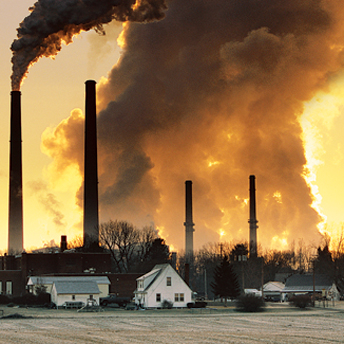

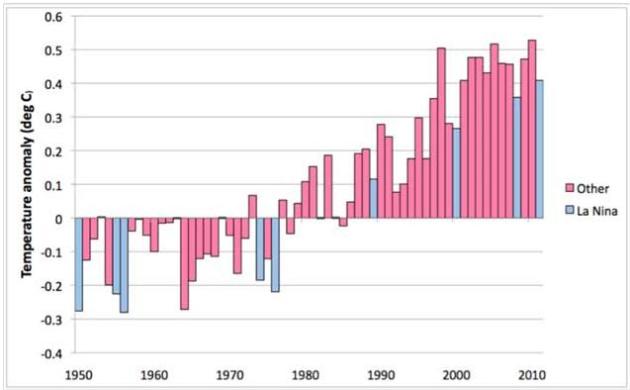


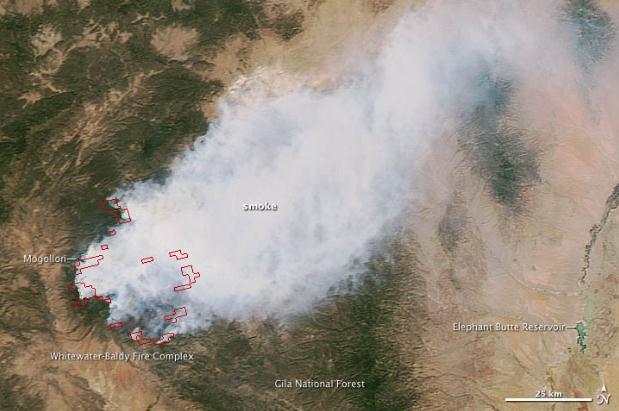
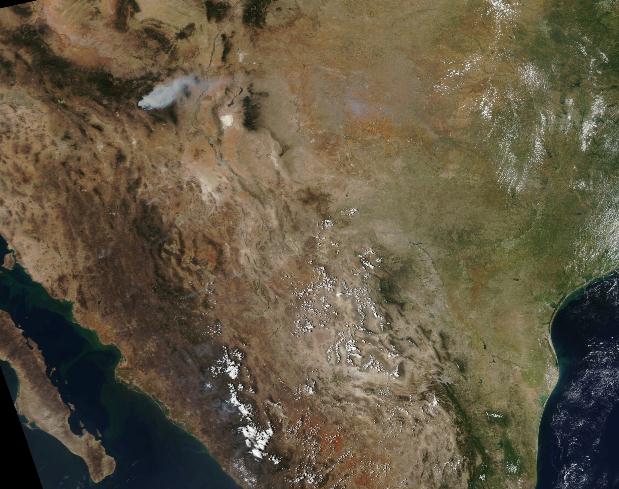




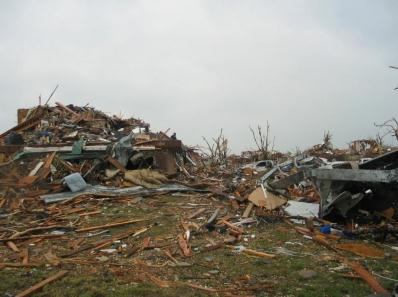
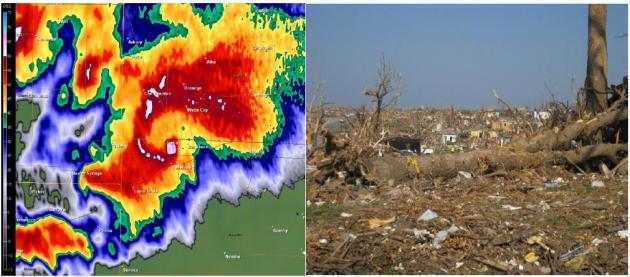

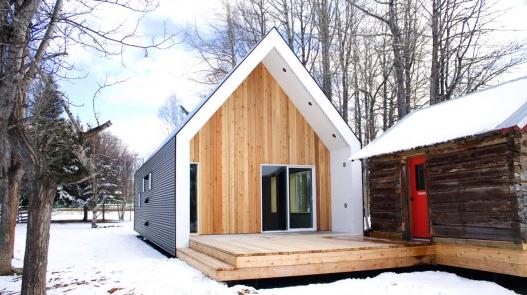




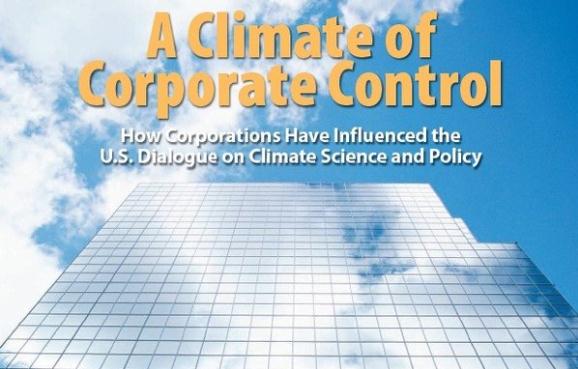
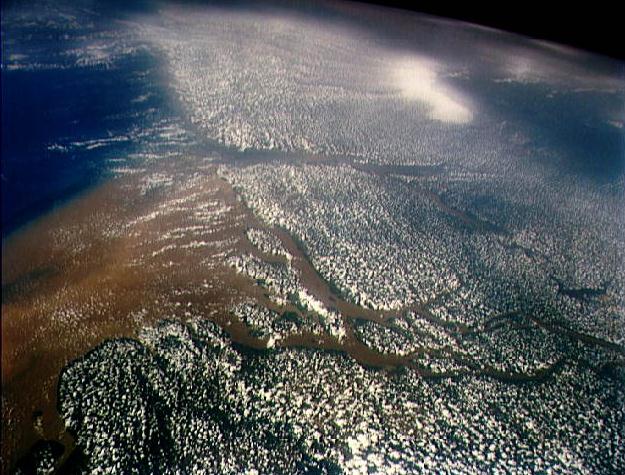








No comments:
Post a Comment